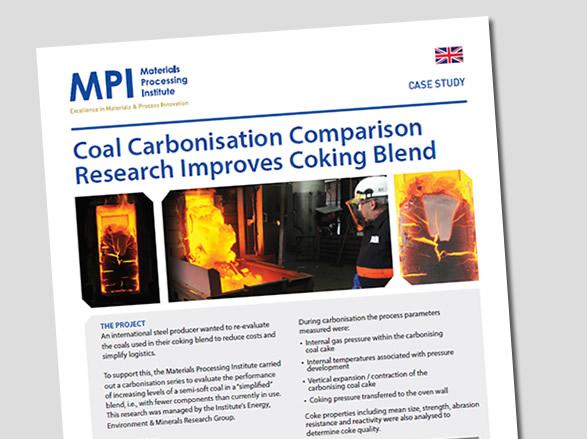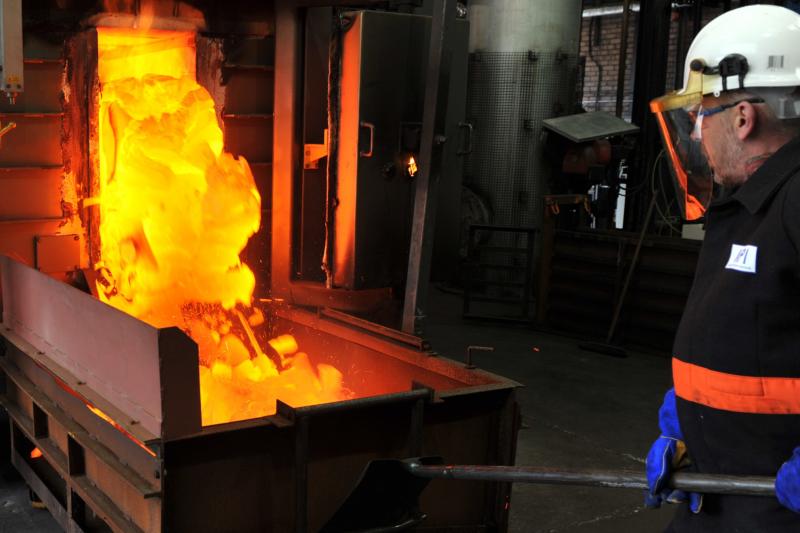Case Study: Coal Carbonisation Comparison Research Improves Coking Blend


The Project
An international steel producer wanted to re-evaluate the coals used in their coking blend to reduce costs and simplify logistics.
To support this, the Materials Processing Institute carried out a carbonisation series to evaluate the performance of increasing levels of a semi-soft coal in a "simplified" blend, i.e., with fewer components than currently in use. This research was managed by the Institute's Energy, Environment & Minerals Research Group.
The Research
Carbonisation runs were carried out in the Institute's 350kg Movable Wall Oven to compare blends in which a lower quality coal replaced a prime coking coal. This research could not have been carried out without access to a Movable Wall Oven.
The Materials Processing Institute has the only Movable Wall Oven in the U.K. and is one of only three facilities in Europe with a Movable Wall Oven.
The research looked at coking behaviour, especially pressure development, and resultant coke quality in terms of strength and reactivity.
During carbonisation the process parameters measured were:
- Internal gas pressure within the carbonising coal cake
- Internal temperatures associated with pressure development
- Vertical expansion / contraction of the carbonising coal cake
- Coking pressure transferred to the oven wall Coke properties including mean size, strength, abrasion resistance and reactivity were
The Outcome
The results showed that there was little difference in the carbonisation behaviour of the blends and coking pressure development was within acceptable limits.
Coke quality in terms of strength and abrasion resistance remained uniform and reactivity was largely unaffected by substitution of the prime coking coal with the semi-soft coal.
A switch to incorporating more semi-soft coal in the coking blend has led to significant savings.
Click here to download the case study (PDF file)
12 April 2017



